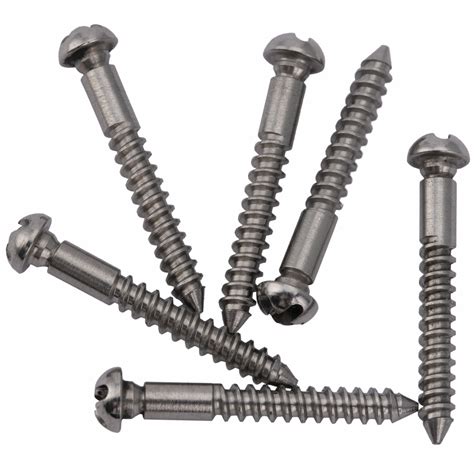Fastener Fundamentals: A Comprehensive Guide to Connecting Elements Securely
Fasteners, an integral part of our daily lives, are indispensable in various industries, including construction, manufacturing, and automotive, serving as the means to join and secure components together. This comprehensive guide explores the vast world of fasteners, providing valuable insights into their types, applications, and best practices.
Types of Fasteners
The vast array of fasteners available caters to a wide range of applications. Each type possesses distinct characteristics and serves a specific purpose.
Screws
Screws, one of the most common fasteners, feature a helical thread that enables them to be driven into a material. They come in various head styles, drive types, and thread sizes to accommodate different applications.

Bolts
Bolts, similar to screws, have a threaded shaft and require a nut to form a secure connection. They are used in applications where high-strength fastenings are required, such as in structural assemblies.

Nuts
Nuts, when paired with bolts, provide secure locking mechanisms. They come in various shapes and thread sizes to match the diameter and pitch of the bolts.
Washers
Washers are flat, disc-shaped components placed under or between fasteners to distribute load, prevent loosening, and protect surfaces.

Rivets
Rivets are one-piece fasteners that are permanently installed by deforming their shaft, creating a strong mechanical joint. They are ideal for applications where disassembly is not required.
Others
Additional fastener types include pins, nails, staples, and adhesive fasteners, each serving specific applications.
Applications of Fasteners
Fasteners find applications across numerous industries, including:
-
Construction: Joining structural elements, securing fixtures, and assembling furniture
-
Manufacturing: Assembling machinery, connecting components, and securing panels
-
Automotive: Fastening engine parts, body panels, and wheels
-
Aerospace: Joining aircraft components, securing wiring harnesses, and providing structural integrity
-
Electronics: Securing circuit boards, mounting components, and providing grounding
Effective Fastener Selection Strategies
Choosing the right fastener for a particular application requires careful consideration of several factors:
-
Load requirements: Determine the amount of force the fastener will be subjected to, such as tensile, shear, or bending loads.
-
Material compatibility: Consider the compatibility of the fastener with the materials being joined, including their chemical composition and mechanical properties.
-
Environmental conditions: Assess the operating environment, including temperature, humidity, and exposure to chemicals or corrosive substances.
-
Assembly and disassembly: Determine the ease of assembly and disassembly, along with any potential maintenance requirements.
-
Cost: Consider the overall cost of the fastener, including its initial purchase price and installation and maintenance costs.
Common Mistakes to Avoid
To ensure optimal performance and safety, avoid these common mistakes:
-
Overtightening: Applying excessive force can damage the fastener or the material being joined.
-
Incorrect fastener size: Using fasteners that are too large or too small can compromise joint integrity.
-
Ignoring thread engagement: Proper thread engagement is crucial for maintaining joint strength and preventing loosening.
-
Improper torque: Applying incorrect torque can weaken the joint or cause the fastener to fail prematurely.
-
Mixing materials: Combining dissimilar metals can lead to galvanic corrosion, weakening the joint over time.
Pros and Cons of Different Fasteners
Screws
-
Pros:
- Variety of head styles and drive types for diverse applications
- Easy to install and remove, allowing for maintenance and repair
- Provide strong and versatile connections
-
Cons:
- Can loosen over time due to vibrations or temperature changes
- Require precise alignment for proper engagement
Bolts
-
Pros:
- Offer high strength and load-bearing capacity
- Suitable for permanent and semi-permanent connections
- Can be used in conjunction with nuts for adjustable connections
-
Cons:
- More complex to install and remove than screws
- Require additional components (nuts)
- Susceptible to corrosion if not properly protected
Rivets
-
Pros:
- Provide strong and permanent joints
- Can be installed quickly and easily using specialized tools
- Ideal for joining thin or curved materials
-
Cons:
- Difficult to remove once installed, making repairs or modifications challenging
- Can create a raised surface, affecting aesthetics
FAQs
-
What is the difference between a screw and a bolt?
- Screws can be driven directly into a material, while bolts require a nut to form a secure connection.
-
What is the best type of fastener for wood?
- Wood screws are specifically designed for joining wood materials, providing excellent holding power and resistance to splitting.
-
How do I choose the right size fastener?
- Consider the thickness of the materials being joined and the load requirements to determine the appropriate length and thread size.
-
What is torque?
- Torque is the twisting force applied to a fastener to tighten or loosen it.
-
How do I prevent galvanic corrosion?
- Galvanic corrosion occurs when dissimilar metals are combined in the presence of an electrolyte. To prevent this, use fasteners made of compatible materials or apply protective coatings.

-
When should I use a washer?
- Washers are used to distribute load, prevent loosening, and protect surfaces from damage under the head of the fastener.
-
What is the difference between a nut and a lock washer?
- Nuts are used to secure bolts, while lock washers are placed under nuts to prevent them from loosening due to vibrations or temperature changes.
-
How do I remove a stripped screw?
- Stripped screws can be removed using specialized tools, such as screw extractors or reverse drill bits.
Conclusion
Fasteners play a critical role in securing components and ensuring the integrity of structures and machines. By understanding the different types of fasteners, their applications, and best practices, individuals can effectively select and utilize these essential elements for optimal performance and durability.

